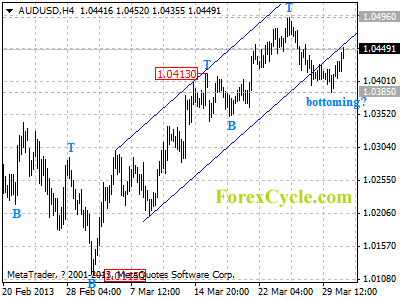Far offshore and deep beneath the seabed lies the future of the oil industry.
There’s a long, fascinating story here. But the short version is that in the past couple of decades, geologists have come to understand that there are large volumes of oil offshore. There’s a vast new hydrocarbon resource in the deep offshore waiting to be found.
In some areas of the deep offshore, the geology is such that you can actually ‘move the reserve needle’ with large finds. We’re talking about the possibility of finding hundreds of millions of barrels of oil in one place, or even billions of barrels. It’s quite a prize.
In fact, this new deep-offshore frontier makes for immense energy numbers, with strategic implications for an oil-constrained future.
But working offshore is quite unlike the olden days of finding large oil fields on land. Today, going far offshore and drilling deep down is a couple orders of magnitude more difficult than what we’ve experienced in the past. And the technical and operational effort is far beyond what most people, politicians, and policymakers realize.
It’s a huge effort to go far out, deep down, and work safely in the oceanic environment. The technology is extraordinary, as are the daily operational challenges. Indeed, it’s not just hard for most landlubbers to understand; it’s hard for many people who aren’t insiders to the offshore industry to appreciate as well.
I had the rare opportunity to go offshore and visit a working drilling ship positioned about 240 miles south of New Orleans, in the deep waters of the Gulf of Mexico. The water depth in the area is 6,750 feet to seabed, or the ‘mud line’, as the veterans call it. And the nearest dry land is 208 miles away, as the crow flies — a very tired crow, indeed.
‘Discoverer Inspiration’, Conducting Exploration
The vessel I visited is named the Discoverer Inspiration, owned by Transocean Ltd. This is a brand-new vessel, launched in 2009 and still fresh from the builder’s yards in South Korea. Inspiration is under a long-term contract with Chevron.
Chevron has a long list of deep-water oil prospects in the Gulf of Mexico, not to mention in many other parts of the world. Thus does Chevron require an ultra-modern ship like Inspiration to do the drilling.
To this end, Chevron is committing $1 million per day over the next five years — about $2 billion — for Inspiration to explore and test these deep-water prospects. And the effort will require all of Inspiration’s astonishing capabilities.
Let me emphasize that the well I saw under way is an EXPLORATION well. Chevron does not ‘know’ for sure that there’s oil there.
Certainly, Chevron’s geologists and management hope to find oil. But even the best of odds are that one of six-eight exploration wells is successful. Most often, the wells find ‘information’, which is a euphemism for, ‘We spent a hell of a lot of money but didn’t find commercial oil.’
In essence, Chevron is making a gigantic bet. It’s using a drill bit attached to a $700 million, state-of-the-art drilling vessel. Just this one well has a project budget in excess of $150 million. It’s not for the faint of heart.
Welcome to the Modern Oil Age
Also, IF this particular well finds oil — it’s a big ‘if’ — there is NO EXISTING TECHNOLOGY to extract it. So a successful exploration find will simply prompt the need for more research and development of new technology to develop a distant oil field, under a mile and a half of water, with no offshore logistical infrastructure for about 100 miles.
Under the best of circumstances, Chevron couldn’t lift any oil for perhaps six, eight or 10 years — maybe more. In this business, you have to think very long term.
Here’s a rough outline of the technical challenges that await the explorer in this new, deep-water realm.

On one hand, welcome to the modern oil age. On the other, I know that the circumstances are such as to make some people wonder why the folks at Chevron do it.
I believe I can answer that second question. It’s because the volumes of oil out there are so large as to make it worth the time, capital and effort of the likes of a company like Chevron. Also, if Chevron doesn’t do it, then who will?
There are only a few other firms in the world that have the capable people, innovative technology, world-class safety performance, capital strength and industry partnerships to undertake such challenges.
So Chevron and Transocean are committing immense amounts of capital and technical expertise to a long five-year mission — which is only the start of an effort that could last for much of the 21st century. Inspiration is, in a sense, the new starship of a real ‘trek’ into the unknown realm of deep-sea oil exploration and development. This is the future of oil.
Byron King
Contributing Editor, Money Morning
From the Archives…
Why Dividend Stocks May Not Stay This Cheap for Long
29-03-2013 – Kris Sayce
Respect the Market Trend, but Don’t Expect it to Last
28-03-2013 – Murray Dawes
Silver ‘$100 Within Two Years’
27-03-2013 – Dr. Alex Cowie
11 Billion Reasons to Expect a 200% Move in Gold Stocks Within Months
26-03-2013 – Dr. Alex Cowie
You Want Proof the Stock Market’s Heading Up? Try This…
25-03-2013 – Kris Sayce


